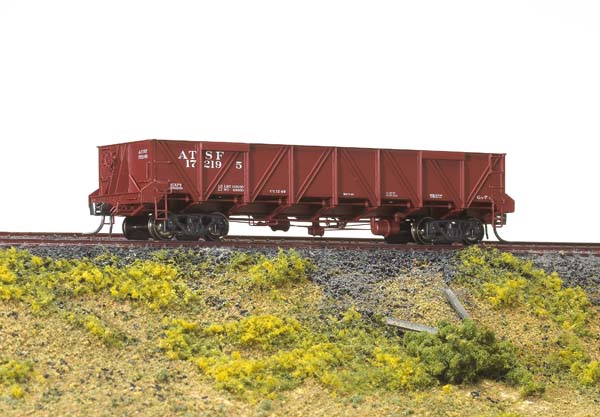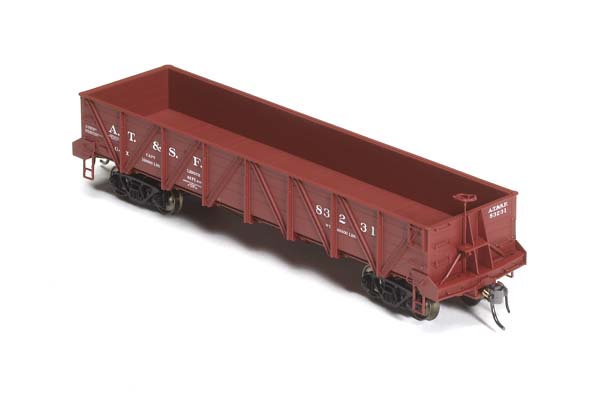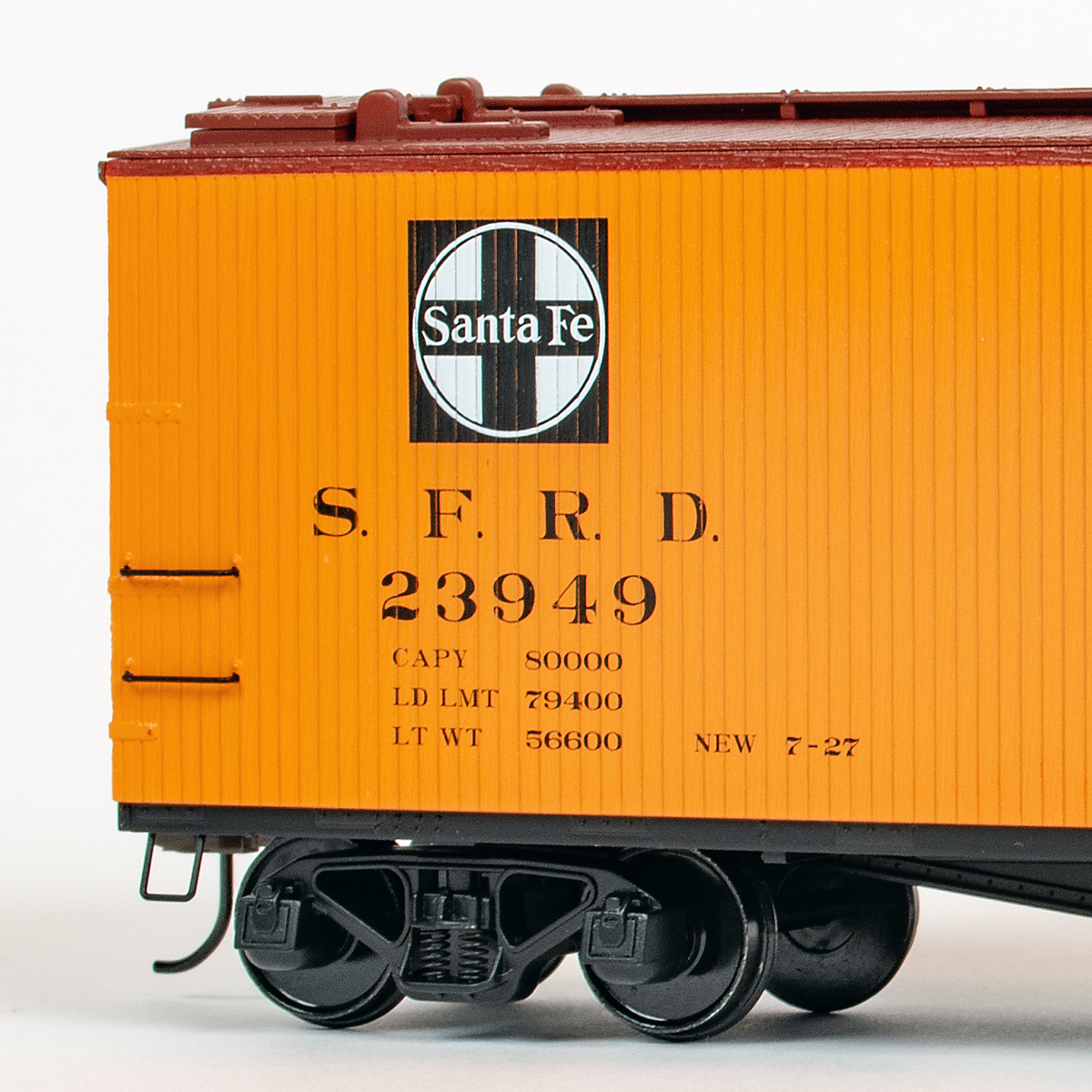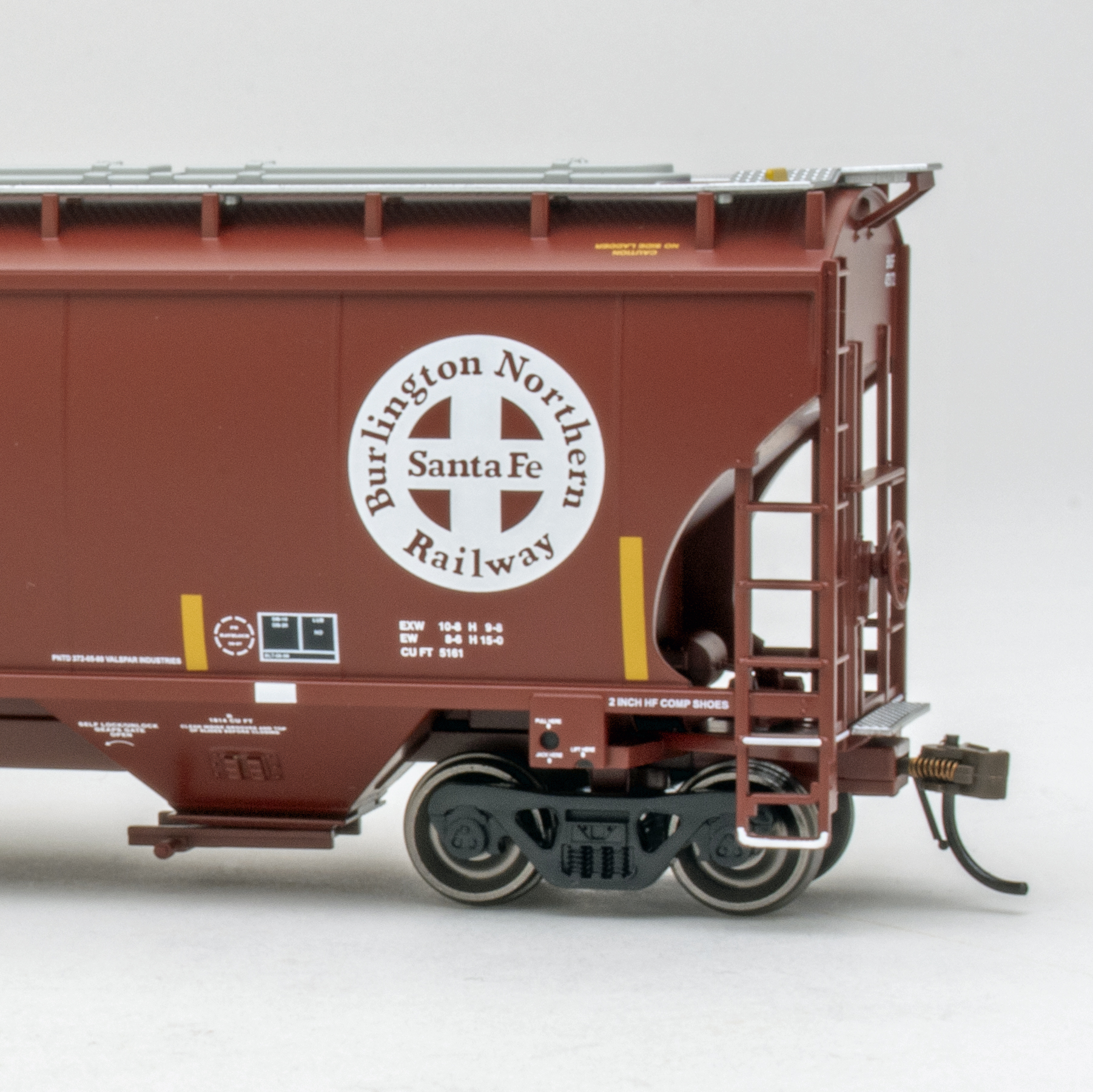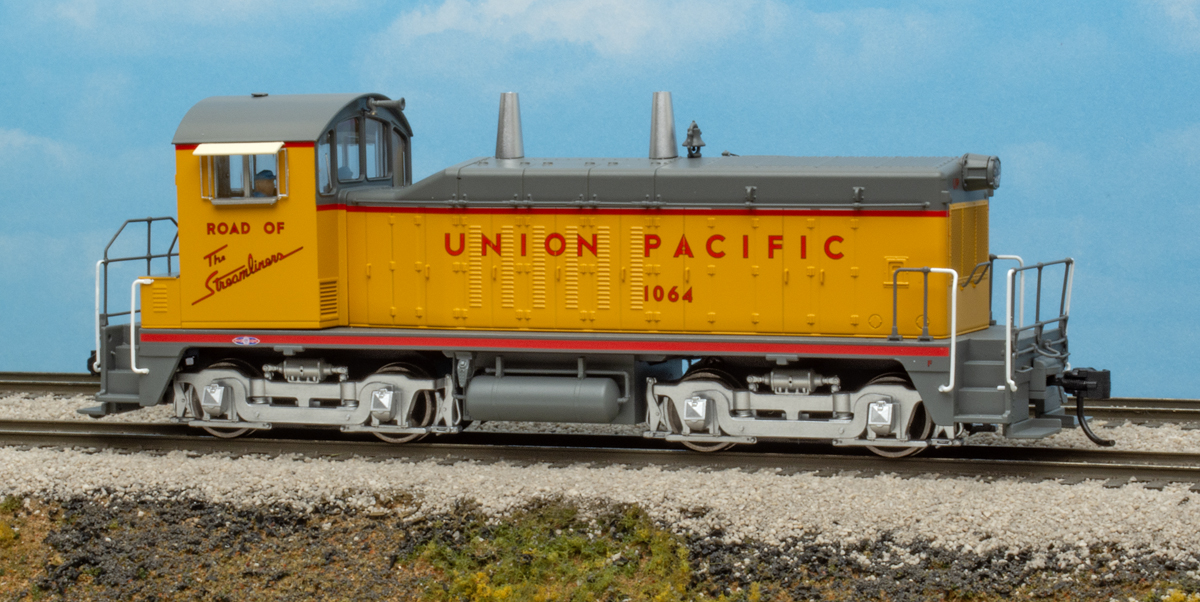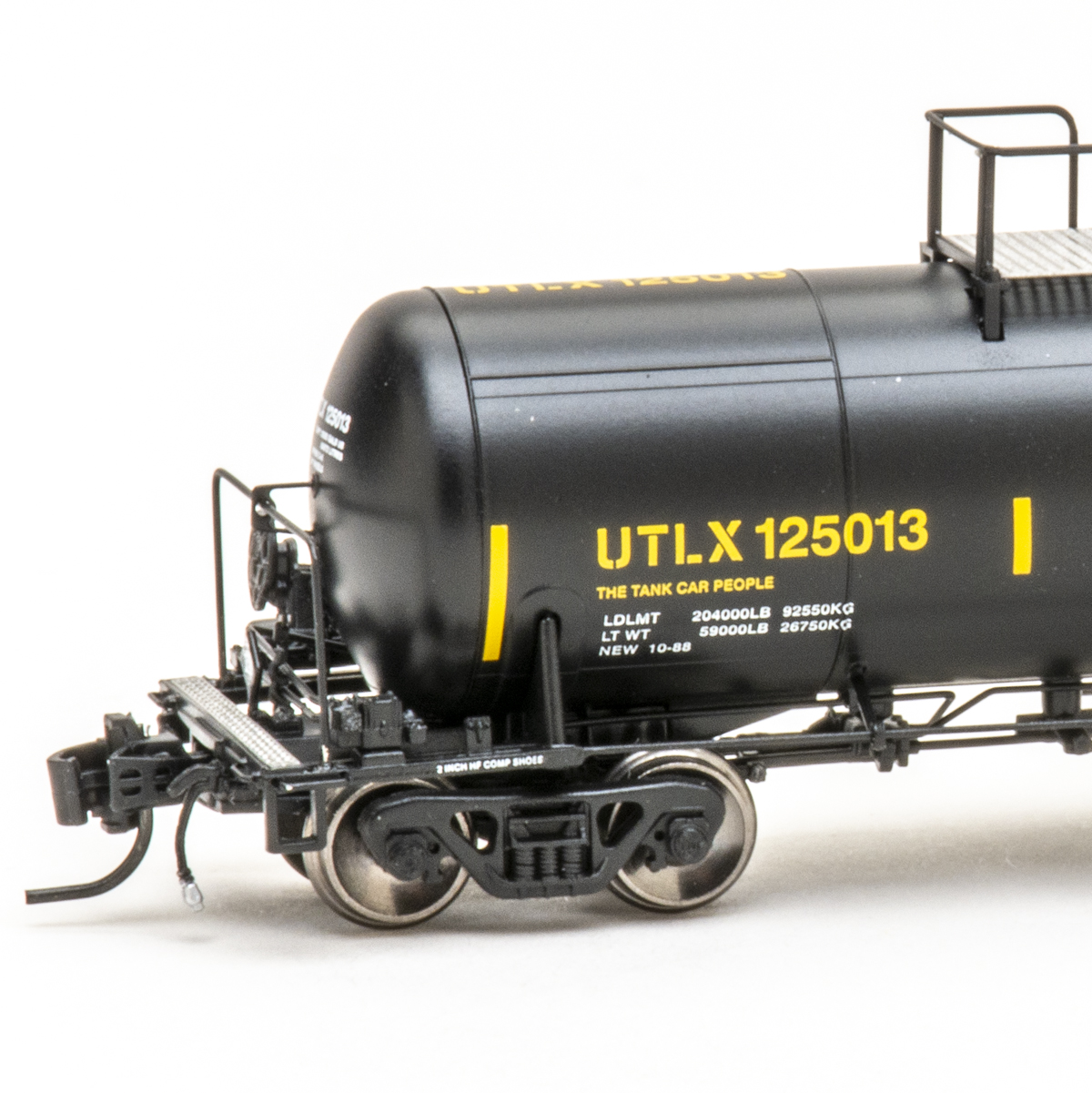In 1905 the AT&SF adopted the Caswell system marketed by the National Dump Car Co. and built by American Car & Foundry. Its four horizontal shafts with pinion gears moved on racks in the crossbearers to open and close the doors.
The Santa Fe acquired 8,800 Caswell gondolas through 1927. Some 8,450 of them were of the design depicted by the InterMountain model.
The molded detailing is excellent, and the cars include many formed-wire parts. The brake gear and piping are especially obvious in a car that rides so high over its trucks, as is the daylight that appropriately shows between the car floor and the top of the center sill.
Two noticeable details are missing: uncoupling levers and the horizontal grab irons extending out from the bulb angle (the flange along the top chord) and spanning the top of the diagonal braces on each end. The trucks should be painted to match the body color on anything but a factory-fresh car; Polly Scale Mineral Red is a close match.
The model is offered in two versions: a class Ga-X in 1913 lettering with KC brake equipment and a vertical-staff handbrake, and a class Ga-7 in post-1944 lettering with AB brake gear and an Ajax handbrake.
All the Caswells were built with K brakes and a staff handbrake, and most received AB and Ajax equipment as later retrofits (not necessarily both at the same time). The Ga-7 model also has reinforcing plates connecting the two outboard side posts; these were added to most of the Caswell gondolas in the 1930s.
The Ga-X had Andrews trucks with cast T-section sideframes, and the Ga-7 had Andrews trucks with U-section sideframes. The trucks on both models most closely resemble the U-section type.
Some models from early shipments have kingpin screws driven at an angle and holding the truck out of line so that one wheelset doesn’t touch the rail. The simplest correction is to loosen the screw so the truck can ride level. On my own cars I drill out the bolster bosses, glue in 1/8″ styrene tubing, and tap that for 2-56 kingpin screws.
InterMountain has done Santa Fe modelers a great service by making it easy to have a fleet of accurate, good-looking Caswells.
Accurate underframe with
slotted crossbearers
Blackened brass scale
33″-diameter wheelsets
(correctly gauged)
Kadee magnetic knuckle
couplers (at correct height)
Weight: 3 ounces (3/4 ounce too
light per NMRA RP-20.1)
Wire grab irons and other details
Price: $29.95
Manufacturer
InterMountain Railway Co.
P.O. Box 839
Longmont, Colo.
www.imrcmodels.com
Description: Plastic and metal ready-to-run gondola car
Models: Painted and lettered Ga-X and Ga-7, 12 car numbers; painted, unlettered with KC or AB brake





